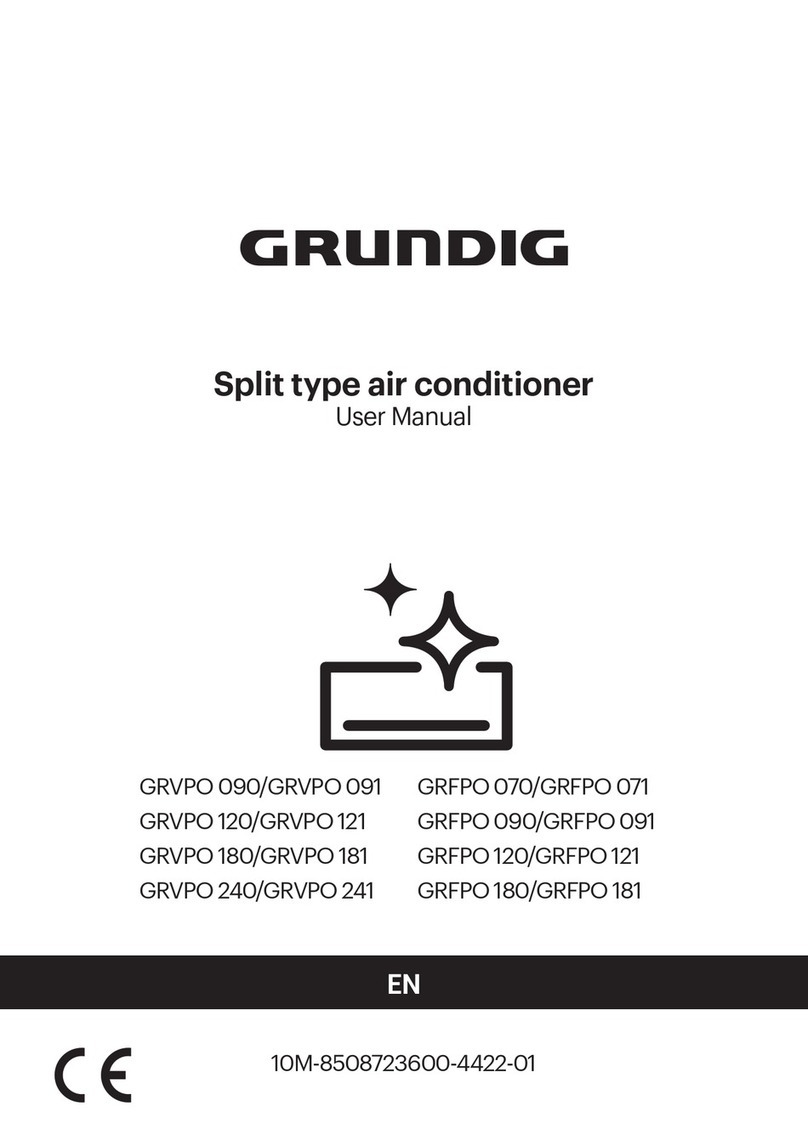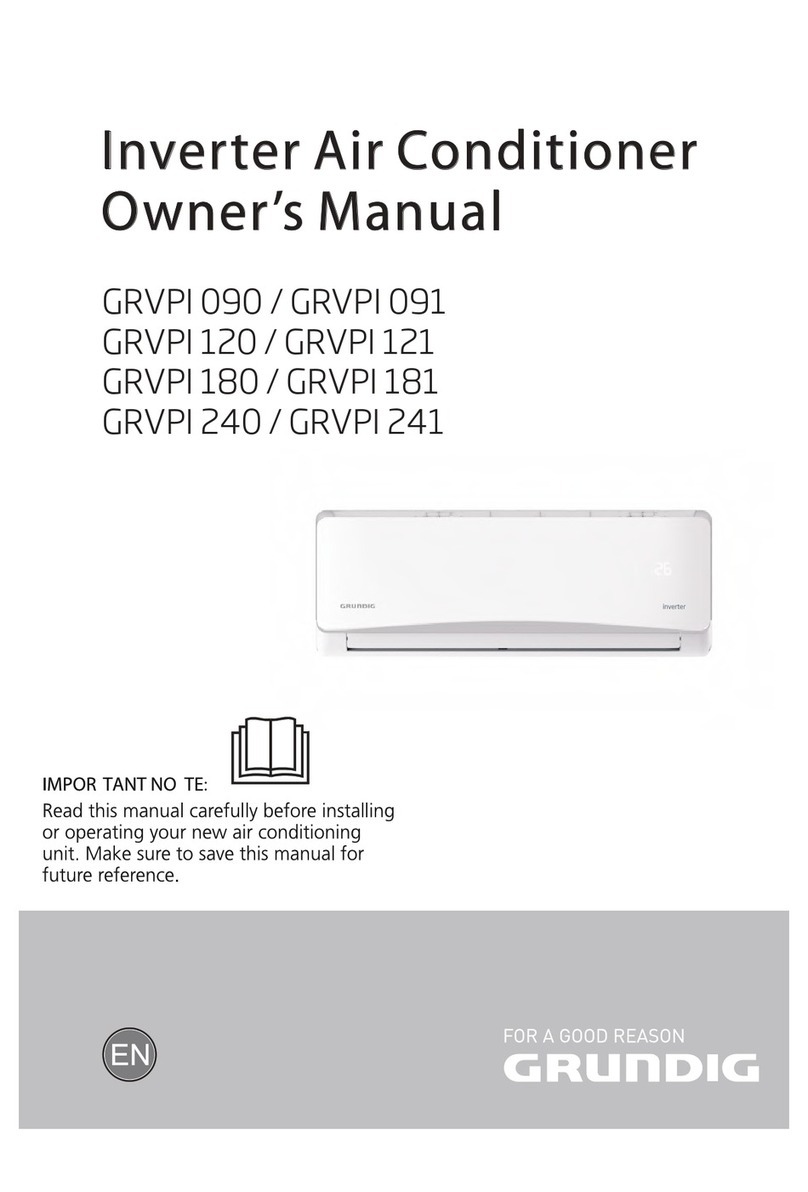Split-type room air conditioner / Installation Manual 5 / 56 EN
•Contact an authorized service technician for repair or maintenance
of this unit.
•Only use the included accessories, parts, and specified parts for
installation. Using non-standard parts can cause water leakage,
electrical shock, fire, and can cause the unit to fail.
•Install the unit in a firm location that can support the unit’s weight.
If the chosen location cannot support the unit’s weight, or the
installation is not done properly, the unit may drop and cause
serious injury and damage.
•For all electrical work, follow all local and national wiring standards,
regulations, and the Installation Manual. You must use an
independent circuit and single outlet to supply power. Do not
connect other appliances to the same outlet. Insufficient electrical
capacity or defects in electrical work can cause electrical shock or
fire.
•For all electrical work, use the specified cables. Connect cables
tightly, and clamp them securely to prevent external forces from
damaging the terminal. Improper electrical connections can
overheat and cause fire, and may also cause shock.
•All wiring must be properly arranged to ensure that the control board
cover can close properly. If the control board cover is not closed
properly, it can lead to corrosion and cause the connection points
on the terminal to heat up, catch fire, or cause electrical shock.
•In certain functional environments, such as kitchens, server rooms,
etc., the use of specially designed air-conditioning units is highly
recommended.
•If the supply cord is damaged, it must be replaced by the
manufacturer, its service agent or similarly qualified persons in
order to avoid a hazard.
1 Safety instructions





























